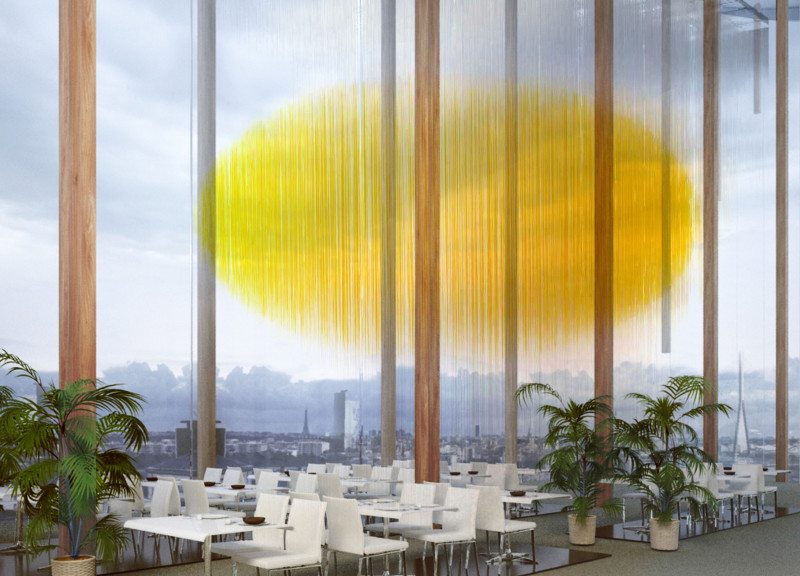5 key facts about this project
At its core, this project functions as a multifunctional hub for conferences, exhibitions, and community events. The design prioritizes flexibility, allowing various spaces to adapt to different activities, from professional meetings to cultural exhibitions. The architectural layout encourages fluid movement throughout the center, promoting an engaging experience for all users.
The building's form is notable for its dynamic roofline, which subtly echoes the contours of the surrounding landscape. This design decision creates a visual dialogue between the architecture and the natural context. The roof's curvature enhances the project's organic feel, contributing to its overall integration within the existing environment.
Materiality plays a crucial role in the "Hill and Forest" project. The use of glass is prevalent, facilitating ample natural light and creating a sense of transparency between indoor and outdoor spaces. This choice of material not only enhances the aesthetics but also promotes energy efficiency. Wood is extensively utilized throughout the design, particularly in structural columns and interior finishes, adding warmth and resonating with the forest theme. Concrete elements offer durability and structural integrity, while metal components are employed for roofing and strategic details, highlighting contemporary construction methods without compromising the overall vision.
Landscaping is another essential aspect of this project. The surrounding terrain is transformed into an artificial forest, filled with native trees and shrubs that create an immersive environment. Pathways meander through this green space, guiding visitors to various functional areas of the center. This landscape design encourages exploration, evoking a sense of tranquility and connection to nature.
Inside the conference center, the spatial organization is carefully thought out. The design includes versatile auditoriums that can accommodate large audiences for presentations and performances. Exhibition areas are adaptable, allowing for various installations and interactive displays. Additionally, cafes and observation decks provide inviting spaces for relaxation while offering stunning views of the nearby waterways and landscapes.
A unique approach evident in this project is the emphasis on community interaction and cultural engagement. The architecture is deliberately designed to facilitate gatherings and promote social connections, elevating the center's role beyond a conventional conference venue. The integration of natural elements throughout the design encourages users to engage with their surroundings, fostering a sense of belonging.
Moreover, the "Hill and Forest" project stands out through its sustainable design strategies. Careful consideration is given to biodiversity and environmental impact, ensuring that the development contributes positively to the local ecosystem. This forward-thinking approach aligns with contemporary architectural trends that prioritize sustainability as a fundamental aspect of design.
In summary, the "Hill and Forest" project is a testament to thoughtful architectural design that respects and enhances its natural environment. Through its careful material selection, innovative spatial arrangements, and community-focused philosophy, it offers a valuable space for interaction and cultural exchange. For those interested in understanding the architectural plans, sections, and further design ideas, exploring the project presentation will provide deeper insights into this well-conceived endeavor.


























